 Results of a recent survey of grocery and restaurant executives signals an opportunity for the supply chain to provide retailers better support and alignment to address challenging issues in animal agriculture.
Results of a recent survey of grocery and restaurant executives signals an opportunity for the supply chain to provide retailers better support and alignment to address challenging issues in animal agriculture.
Conducted by the Center for Food Integrity (CFI), the survey asked questions of QSR and procurement managers from 10 leading food industry retailers, including Walmart, McDonalds, Burger King, Marsh Supermarkets, Bob Evans, Giant Eagle, Wakefern Food Corp., Sodexo, Inc., Brinker International and Harris Teeter.
Using quantitative and qualitative methods, conducted both by phone and online, the survey was intended to provide feedback and stimulate discussion in an effort to improve supply chain alignment on critical issues facing animal agriculture.
Specifically regarding meat, milk and eggs, each respondent was asked for their thoughts regarding practices “on farm” and “during processing” that result in safe food; humane treatment of animals; sustainable protection of natural resources and; the nutrition of products. Further, the survey asked about their thoughts on the safety of food derived from animals treated with antibiotics; animals treated with hormones and; foods using biotechnology in their production.
Responses to each of those questions showed a significant need for additional, fact-based information about these issues, created to support retailers and restaurateurs.
And in a recent ZimmPoll that asked the question, “Which group should restaurants consider experts on animal care?”, 48% said Farmers, 35% said Veterinarians, 16% said Ag Industry, 1% said Activists and no one selected Government.
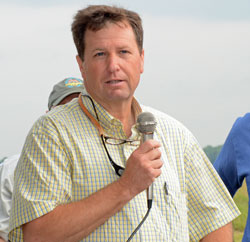 Rob Coker farms corn and soybeans in Yazoo County, Mississippi. He’s currently serving as the President of the Mississippi Corn Promotion Board and just completed his term as Chair of Delta F.A.R.M. He’s a progressive conservationist who is always looking for new technologies and practices.
Rob Coker farms corn and soybeans in Yazoo County, Mississippi. He’s currently serving as the President of the Mississippi Corn Promotion Board and just completed his term as Chair of Delta F.A.R.M. He’s a progressive conservationist who is always looking for new technologies and practices. 
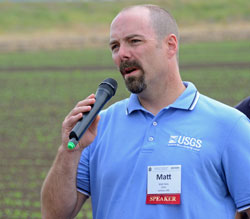 Matt Hicks, U.S. Geological Survey, talked to the 2012 Conservation in Action Tour about water quality monitoring. We were standing next to a monitoring station that collects data from one of the drainage ditches on the farm. You can find photos of it in the online photo album.
Matt Hicks, U.S. Geological Survey, talked to the 2012 Conservation in Action Tour about water quality monitoring. We were standing next to a monitoring station that collects data from one of the drainage ditches on the farm. You can find photos of it in the online photo album.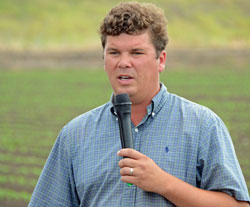 Buddy Allen grows cotton, corn, soybeans and rice in Tunica County Mississippi. He’s highly involved in conservation organizations and invests in new technologies to improve irritation efficiency. Buddy says he’s got a great relationship with all the various groups and agencies working on conservation in the Delta area.
Buddy Allen grows cotton, corn, soybeans and rice in Tunica County Mississippi. He’s highly involved in conservation organizations and invests in new technologies to improve irritation efficiency. Buddy says he’s got a great relationship with all the various groups and agencies working on conservation in the Delta area. 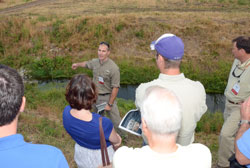 Water quality was the theme of the 2012 Conservation in Action Tour stop where we met Robbie Kroger, Mississippi State University. You’ll notice a drainage ditch in the photo. After some opening remarks we got down there to see some of the creative ways that this farm is managing runoff water using pipes, pads and weirs.
Water quality was the theme of the 2012 Conservation in Action Tour stop where we met Robbie Kroger, Mississippi State University. You’ll notice a drainage ditch in the photo. After some opening remarks we got down there to see some of the creative ways that this farm is managing runoff water using pipes, pads and weirs. Travis Satterfield grows mainly rice and soybeans in Mississippi. He has also served as Chair of Delta F.A.R.M. and is a member of the Mississippi Delta Sustainable Water Resources Task Force. I visited with him during the 2012 Conservation in Action Tour.
Travis Satterfield grows mainly rice and soybeans in Mississippi. He has also served as Chair of Delta F.A.R.M. and is a member of the Mississippi Delta Sustainable Water Resources Task Force. I visited with him during the 2012 Conservation in Action Tour.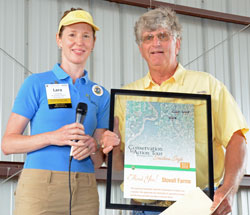 The first stop on the 2012 Conservation in Action Tour was Stovall Farms. Our host was Pete Hunter, one of the farm owners. In the photo Pete is receiving a thank you gift from Conservation Technology Information Center board member Lara Moody, The Fertilizer Institute.
The first stop on the 2012 Conservation in Action Tour was Stovall Farms. Our host was Pete Hunter, one of the farm owners. In the photo Pete is receiving a thank you gift from Conservation Technology Information Center board member Lara Moody, The Fertilizer Institute.
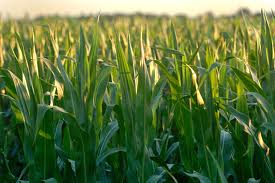

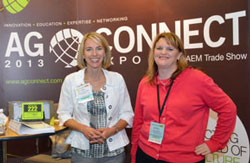
 AG CONNECT is generating excitement for the event through an interactive social media campaign featuring “Masters and Mavericks” of agriculture. The program kicked off in early May by revealing the identities of the five Masters & Mavericks who are featured in the show’s marketing campaign. Clues are being released via Facebook and Twitter, with one producer revealed each week ending on June 8. If you can correctly identify one of the Masters & Mavericks, you could win a $150 Visa gift card. The most recent producer revealed was Kip Tom of Tom Farms LLC in Leesburg, Indiana – who also happens to be one of
AG CONNECT is generating excitement for the event through an interactive social media campaign featuring “Masters and Mavericks” of agriculture. The program kicked off in early May by revealing the identities of the five Masters & Mavericks who are featured in the show’s marketing campaign. Clues are being released via Facebook and Twitter, with one producer revealed each week ending on June 8. If you can correctly identify one of the Masters & Mavericks, you could win a $150 Visa gift card. The most recent producer revealed was Kip Tom of Tom Farms LLC in Leesburg, Indiana – who also happens to be one of 